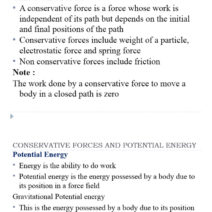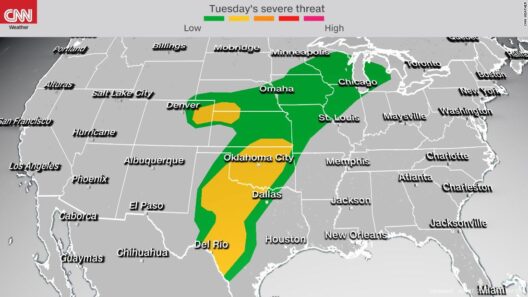In the grand theatre of physics, collisions serve as one of the most dramatic acts, where forces collide, and energy shifts in a thrilling performance that can captivate anyone fascinated by the mechanical interactions of the universe. Among the myriad of interactions, inelastic collisions take center stage, offering an enlightening perspective on the nature of kinetic energy conservation. The question arises – is the total kinetic energy conserved in an inelastic collision? To answer this question, one must delve into the nuances that differentiate inelastic from elastic collisions.
At the outset, it is crucial to unravel the defining characteristics of inelastic collisions. In essence, these are events where the colliding bodies interact in such a manner that they do not conserve their total kinetic energy. Imagine two dancers in a performance; when they collide and embrace in a combined movement, energy is transformed. The energies dissipate between them, perhaps into sound, heat, or even the deformation of their costumes, rather than continuing in unison as kinetic energy. This illustrates the heart of the matter: inelastic collisions are akin to a passionate embrace, where the participants lose some measure of their individual energy as they meld into one.
The law of conservation of momentum, however, remains sacrosanct even in these inelastic interactions. Regardless of how messy or chaotic the encounter, the total momentum before the collision will equal the total momentum after. This law serves as a foundational principle in physics, akin to an unyielding rule of engagement. Therefore, while kinetic energy may flutter away like leaves in the autumn breeze during an inelastic collision, momentum retains its steadfast presence, ensuring that the essence of the system remains unchanged.
In considering practical examples, the world offers a vivid canvas on which to illustrate inelastic collisions. Picture a car crash, where two vehicles collide and crumple together. The energy imparted to the structures of the cars is converted into irreversible forms, such as heat and deformation. Herein lies the reality of inelastic collisions: they epitomize energy loss and transformation. Rather than springs and sensations of merely bouncing away, like in their elastic counterparts, the aftermath is often visually chaotic, signifying the energy that has changed state.
In elastic collisions, the entities involved rebound from each other like rubber balls, conserving their overall kinetic energy. They act as well-oiled machines, allowing energy to bounce back and forth without capturing it permanently. In contrast, inelastic collisions resemble ironical fates where kinetic energy does not return to its original form; it disperses, possibly creating sound, heat, and permanent structural changes. The lawless nature of energy loss makes inelastic collisions a striking metaphor for chaos in life, where aspirations can become entangled and lost amid the endeavors of existence.
Types of inelastic collisions manifest in both one-dimensional and two-dimensional interactions. In a one-dimensional scenario, two particles collide head-on. For the onlooker, such collisions unveil the stark reality that while momentum is preserved, the kinetic energy is not. As they intertwine, some energy dissipates into forms such as sound waves, emphasizing the transformation that characterizes this collision type.
In contrast, two-dimensional inelastic collisions offer a rich tableau that further illustrates energy transformation. Visualize gliding into one another at varying angles, the elegance of motion producing results that are as captivating as they are educational. These interactions reveal how kinetic energy may be lost amidst the complex dynamics of angles and velocities, akin to an intricate dance where partners spin apart and lack clarity over what energy is retained or transformed. Furthermore, these dualities enhance the understanding of collision mechanics, amplifying the appreciation for the elegance of inelastic interactions.
One might ponder the broader implications of these dynamics. Inelastic collisions invite reflection on energy sustainability and conservation. The energy loss that occurs during such interactions, analogous to wasted potential in various realms of life, compels a reckoning of how we manage energy in our day-to-day activities. Just as kinetic energy is lost in inelastic collisions, so too can valuable resources diminish when mismanaged, reminding us of the necessity to pursue innovations that conserve energy. It beckons us to a greater awareness of the consequences of waste and the importance of sustainable practices.
From a scientific perspective, the implications extend further into various fields such as engineering, automobile safety design, and materials science. Understanding these collisions equips engineers with knowledge essential for creating safer vehicles, ensuring energy dissipates safely during impacts and delivering paramount enhancements in safety protocols. In acknowledging the intricacies of inelastic collisions, professionals can design with foresight, fashioning products that mitigate energy loss and protect lives.
In summary, the tapestry of inelastic collisions illustrates a fundamental truth: total kinetic energy is not conserved. Just as the dancers in the chaos of an embrace yield energy to one another, so too do colliding objects manifest a transformation of energy that dissipates into other forms. Despite this loss, momentum remains a steadfast companion, guiding the aftermath of these encounters. The reflection necessitated by such scenarios highlights both the scientific intricacies of our universe and underscores the crucial importance of energy conservation. From the bustling avenues of daily life to the intricate dance of particles, the exploration of inelastic collisions beckons us to continuously strive for a deeper comprehension of energy in all its manifestations.








